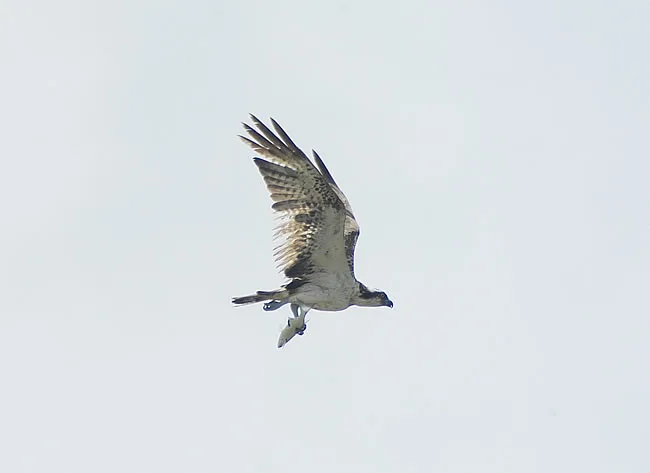
Osprey with prey
Western Osprey (Pandion haliaetus) Science Article 2
abstract
This study examined the relationship between brood size and energetic expenditure of male Ospreys. The daily energetic expenditure (DEE) of male Ospreys, provisioning nestlings and providing post-fledging parental care, was estimated using detailed time-energy budgets. Factors affecting DEE were investigated, and DEE and the maximum rate of energy assimilation were compared to determine whether physiological constraints limit energetic expenditure. The DEE of male Ospreys was independent of brood age, but increased linearly with brood size. Males provisioning three-chick broods had a mean DEE of 1336 kJ/day, significantly more than the mean of 1084 kJ/day expended by males provisioning single-chick broods. Male Ospreys, however, did not respond to brood size manipulations by altering their energetic expenditure, indicating that male DEE is not directly determined by brood size. Male Ospreys also did not alter their intake rates when provisioning enlarged broods and the mean brood growth rate following brood enlargement was consequently reduced. Weather conditions had a small affect on DEE; male Ospreys had a lower energetic expenditure on days when the water surface was calm for a longer time. The DEE of male Ospreys in this study was estimated to be well below the maximum they are able to sustain. Physiological constraints therefore appear unlikely to limit brood size in Ospreys. It is suggested that individual differences in age or current condition may influence both brood size and the level of energetic expenditure of male Ospreys as these factors could affect an individual’s residual reproductive value and the magnitude of the costs associated with various levels of reproductive effort.
Green D.J. & Ydenberg R.C, ARDEA 82 (2): 249-262.
